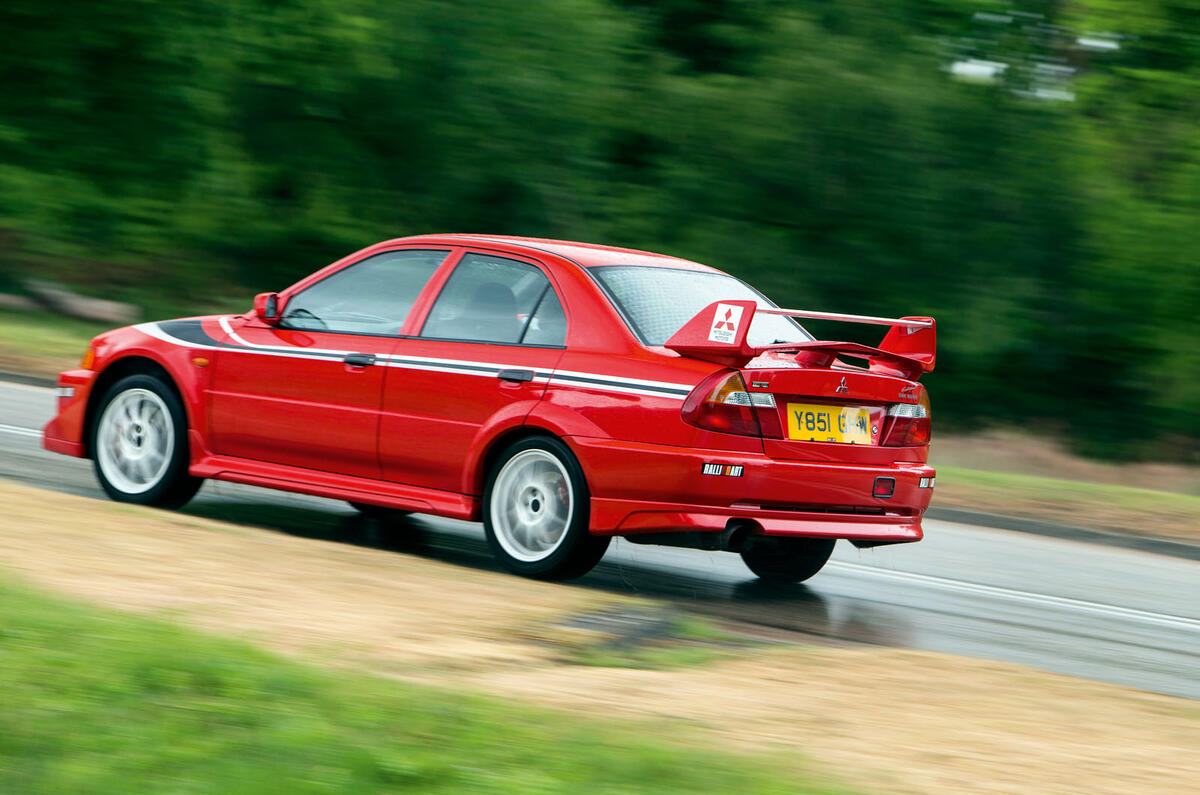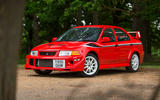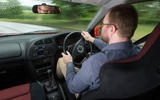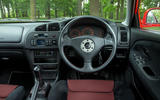'Future classic’ is a phrase this most sober of buying guides likes to avoid, but in the case of the Mitsubishi Lancer Evo VI, we’ll make an exception.
The model has all the ingredients for a healthy pension fund: scarcity (around 500 on the road or SORNed), desirability (an active fan base keeps the flame alive), pedigree (Evos were frontrunners in the WRC from 1996-99), technology (four-wheel drive with active yaw control) and performance (0-62mph in 4.4sec). All this and, thanks to a four-door body, room for the family.
See Mitsubishi Evolution for sale on PistonHeads
It arrived in 1999 priced at £31,000 and bowed out just two years later. Since then, used imports (in truth, even official Mitsubishi Ralliart cars required single vehicle approval) have continued to pitch up. They make excellent buys but good ones are quickly becoming more expensive.

The ‘standard’ Evo VI GSR stole enthusiasts’ hearts from the get-go. On paper, its 2.0-litre turbocharged engine produced 276bhp (although it’s accepted that it was closer to 300bhp), and 275lb ft. Fed through all four wheels via a five-speed gearbox, it made the 1360kg car fast and exciting.
The key was its generous cooling. Not only did the Evo VI have a bigger intercooler and oil cooler than the Evo V, but it also had enlarged ducts in the front bumper, made possible by locating the numberplate to the side. That told anyone also considering a Subaru Impreza WRX that the Evo VI was ‘serious’.
As if they needed reminding. After all, it had active yaw control (AYC), a system that minimises oversteer and understeer. Its body was stiffened with 130 additional spot welds and thicker gauge steel. The front suspension was improved with stronger, forged front knuckles; the rear with forged aluminium to reduce unsprung weight. In addition to its WRC-inspired mechanicals, it had showroom-friendly features such as climate control, Recaro sports seats and electric windows and mirrors.
Soon, Mitsubishi cast around for a special or two. It didn’t have to look far. What better way than to celebrate its star rally driver than with the eponymous Evo VI Tommi Mäkinen Edition? This version had a more responsive turbo, uprated and lowered suspension, quicker steering, a redesigned front bumper for even better cooling, authentic WRC alloy wheels and an optional colour pack. Other specials followed, in particular the stripped-out RS and RSX. These ditched the GSR’s creature comforts as well as the anti-lock brakes and the AYC, which those who crave handfuls of oversteer say is a good thing.

Eighteen years on, whether you buy a used grey (personal) import or former UK Ralliart car is not important. Of greater concern is the number of tuned Evos of dubious quality. The engine can go to 400bhp, but beyond that, you’re asking for trouble. Keep it standard or lightly breathed on, value condition over mileage and look forward to a long and happy retirement.
An expert’s view...
TRISTAN LONGDEN (TORQUE GT)
“The Evo VI is one of the hardest Japanese performance cars to find here as well as in Japan. It has enjoyed a bit of a renaissance in recent years. It may be high-tech, but compared with today’s cars, it offers buyers a purer, more analogue experience. Common problems across all types are rusty chassis legs and wheel arches (it’s why we avoid sourcing Evo VIs from the north of Japan, where they use road salt), and a rusty wastegate that causes a drop in boost pressure. Suspension parts will be tired now so expect to replace drop-links and springs. If the tappets continue to make a ticking noise after the engine has warmed up, the gearbox whines and the AYC squawks in corners, call your bank manager.”
Mitsubishi Lancer Evo VI problems
ENGINE
Test it from cold. It needs servicing every 4500 miles, using fully synthetic oil, and a cambelt every 40,000. It prefers a diet of super-unleaded. Look for exhaust smoke: grey or blue is not good, white on start-up is okay. Check any tappet noise clears as the engine temperature rises. New lash adjusters may fix it (they are not expensive). Inspect the turbo wastegate for rust and the coolant reservoir for leaks. Ensure any mods have supporting paperwork.
TRANSMISSION
Check the clutch works. Around 40,000 miles with careful driving is a typical lifespan. Listen for gearbox whine, indicating worn input shaft bearings or a worn transfer ’box. Notchy gearchanges could be worn synchros. Listen for the AYC squawking in corners. Ensure the AYC light illuminates briefly on start-up. Check for evidence of fresh oil every 25,000 miles or so.
ELECTRICS
Interrogate the car’s diagnostic system by tracking down a dealer with a Mitsubishi MUT-II diagnostic computer.
SUSPENSION
Expect to hear noises and creaks at this age, even on lower-mileage cars. Worn struts, drop-links, springs, dampers, bushes — they all give up.
BRAKES
Worn discs are common. Check by braking hard several times at around 70mph and feeling for a juddery steering wheel and brake pedal.
BODY
Check for crash damage but also for corrosion on the rear chassis legs, around the petrol filler area and the wheel arches.
INTERIOR
Check for sagging door and seat covers. It’ll need a retrim. Seat recline mechanisms are fragile, too. Ensure the speedometer works and it is in ‘mph’. Ignore the erratic fuel indicator.
Also worth knowing...
The most desirable Evo VIs are Tommi Mäkinen Editions in Marlboro red, with prices for the best nudging £50,000. The white ones are special, too, but nowhere near as valuable. Another Evo VI to look out for is the lightweight RS with the Tommi Mäkinen Edition’s quick steering rack but no AYC, air-con or power windows.
Mitsubishi Lancer Evo VI prices
£7500-£10,495
A mix of private and dealer cars with up to 100,000 miles on the odometer.
£10,500-£12,495
Lower-mileage (circa 60,000) cars with solid histories but also some bullishly priced modified examples with huge power upgrades at around £12,000.
£12,500-£14,450
Sprinkling of special-edition cars with reasonable mileages (around 60,000) in good nick and with good provenance.
£14,500-ON
Tommi Mäkinen Evos, including a 400bhp upgrade with 75,000 miles for £15,500, a standard 276bhp car with 35,000 miles for £15,995, a one-owner with 65,000 miles for £18,500 and a 108,000-miler for £22,500.
John Evans



































Join the debate
Add your comment
Brother in law had one
If the ride was appalling
As standard, the suspension is compliant and composed. This is the best B road car Ive ever driven and Ive had a few in my time...
A lot of money for....?